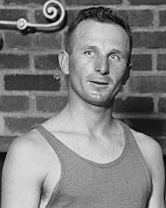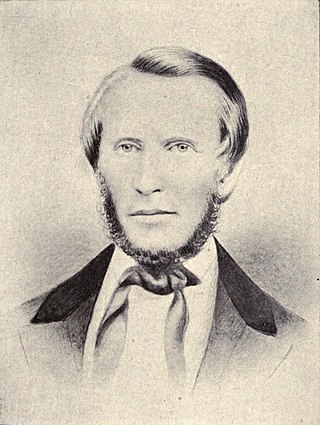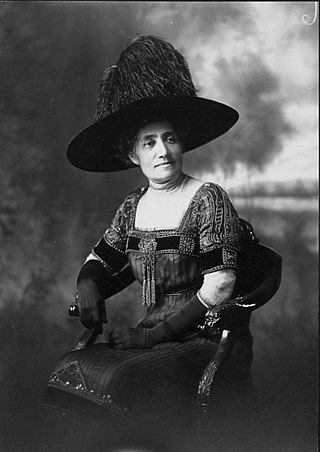Related Research Articles

Duke Paoa Kahinu Mokoe Hulikohola Kahanamoku was a Hawaiian competition swimmer who popularized the sport of surfing. A Native Hawaiian, he was born three years before the overthrow of the Hawaiian Kingdom. He lived to see the territory's admission as a state and became a United States citizen. He was a five-time Olympic medalist in swimming, winning medals in 1912, 1920 and 1924.
Allan Beekman was an American reporter and author who wrote The Niihau Incident, Crisis: The Japanese Attack on Pearl Harbor and Southeast Asia and Hawaiian Tales.

Chang Apana (December 26, 1871 – December 8, 1933; traditional Chinese: 鄭阿平; simplified Chinese: 郑阿平; pinyin: Zhèng Āpíng; Wade–Giles: Cheng4 A1p'ing2; Jyutping: Zeng6 Aa3ping4) was a Chinese-Hawaiian member of the Honolulu Police Department, first as an officer, then as a detective. He was acknowledged by Earl Derr Biggers as the inspiration for his fictional Chinese American detective character, Charlie Chan.

Kohala Historical Sites State Monument includes the National Historic Landmark Moʻokini Heiau and the birthplace of Kamehameha I. It is located in remote North Kohala on the Island of Hawaiʻi.
The Bank of Hawaii Corporation is an American regional commercial bank headquartered in Honolulu, Hawaii. It is Hawaii's second oldest bank and its largest locally owned bank in that the majority of the voting stockholders reside within the state. Bank of Hawaii has the most accounts, customers, branches, and ATMs of any financial institution in the state. The bank consists of four business segments: retail banking, commercial banking, investment services, and treasury. The bank is currently headed by chairman, president and chief executive officer, Peter S. Ho.

Two Rocks is an outer suburb at the northern edge of Perth, the state capital of Western Australia, located 61 kilometres (38 mi) northwest of the city's central business district. It is part of the City of Wanneroo local authority and represents the furthest northern extent of the Perth metropolitan region.

Kui Lee was an American singer-songwriter. Lee began his career in the mainland United States while performing as a dancer. Upon his return to Hawaii, he worked in clubs. At the Honey club, he met Don Ho, who popularized Lee's compositions. Ho's fame made Lee a local success in Hawaii. Multiple artists then covered his song "I'll Remember You".

Ludwig Ernest Frank Langer was a Hall of Fame American competition swimmer and world record holder who competed in freestyle events for the University of California Berkeley, and won a silver medal in the 400-meter freestyle at the 1920 Antwerp Olympics. After moving to Hawaii after graduating from U.C. Berkeley in 1916 to train and work, he was one of six Hawaii-based swimmers who competed at the 1920 Summer Olympics and collectively won seven medals.
Ken Shutt was an American sculptor and watercolorist. He was active in California and Hawaii.

Amos Starr Cooke was an American educator and businessman in the Kingdom of Hawaii. He was patriarch of a family that influenced Hawaii during the 20th century.

William Harrison Rice was a missionary teacher from the United States who settled in the Hawaiian Islands and managed an early sugarcane plantation.

Atlantis Marine Park is an abandoned theme park built in 1981 in Two Rocks, at the time a small fishing community 60 kilometres (37 mi) north of central Perth, the capital of Western Australia. The park was a major feature of Alan Bond's Yanchep Sun City plan. It closed in August 1990 due to a financial difficulty.

Carthaginian II was a steel-hulled brig outfitted as a whaler, which served as a symbol of that industry in the harbor of the former whaling town Lahaina on the Hawaiian island of Maui. She replaced the original Carthaginian, a schooner converted into a barque to resemble a period whaler, which had initiated the role of museum ship there in 1967.

Sovereignty Restoration Day is a national holiday of the former Hawaiian Kingdom celebrated on July 31 and still commemorated by Native Hawaiians in the state of Hawaii. It honors the restoration of sovereignty to the kingdom, following the occupation of Hawaiʻi by the United Kingdom during the 1843 Paulet Affair, by British Rear-Admiral Richard Darton Thomas and when King Kamehameha III uttered the phrase: Ua Mau ke Ea o ka ʻĀina i ka Pono.

Wilhelmine Kekelaokalaninui Widemann Dowsett was a Native Hawaiian suffragist who helped organize the National Women's Equal Suffrage Association of Hawaii, the first women's suffrage club in the Territory of Hawaii in 1912. She actively campaigned for the rights of the women of Hawaii to vote prior to the passage of the Nineteenth Amendment to the United States Constitution in 1920.
Merle Newport Boyer was an American modernist studio art jeweler and sculptor, as well as inventor, machinist, teacher and mentor.

The 2022 United States House of Representatives elections in Hawaii were held on November 8, 2022, to elect the two U.S. representatives from the state of Hawaii, one from each of the state's two congressional districts. The elections coincided with other elections to the House of Representatives, elections to the United States Senate and various state and local elections.

Greta Mae "Puanani" Kanemura Van Dorpe (1933–2014) was an American artist and master of kapa, the Hawaiian art of making cloth from bark fibers. Van Dorpe spent more than forty years researching the forgotten craft of making kapa, investigating the tools and materials used by ancient Hawaiians and experimenting to replicate the cloth. She has been credited as one of the women responsible for reviving the art of kapa in the 1970s.
References
- ↑ Social Security Death Index
- ↑ Buker, Betty Finley (1972). Men and women of Hawaii 1972 : a biographical directory of noteworthy men and women of Hawaii. Honolulu: Star-Bulletin Print. Co. p. 343.
- ↑ Chun, Ella (February 20, 1956). "Honolulu Wood Carver Recalls Movie Lot Days". Honolulu-Advertiser.
- ↑ "Wood Carver Escapes L.A. Smog, Will Live in Isles". Honolulu Star-Bulletin. February 8, 1956.
- ↑ Kay, Diane Fife (1990). Contemporary Hawaiian carving, sculpture, and bowl-turning : an analysis of post-contact and cultural influences [PhD dissertation]. University of Hawaii at Manoa. pp. 230–233.
- ↑ "Mark Le Buse". IMDB (Internet Movie Data Base). Retrieved November 5, 2020.
- ↑ Bisset, Winfred (October 6, 1976). "The eight lives of Mark Le Buse". Australian Women's Weekly. Retrieved November 5, 2020.
- ↑ Letter from Jill Le Buse to Gretchen Schoff, June 8, 1971
- ↑ "Rutter Park mystery solved". Town of Cambridge [Floreat, Western Australia]. January 12, 2017. Retrieved November 5, 2020.
- ↑ "King Neptune sculpture". InHerit- State Heritage Office. August 7, 2007. Retrieved November 5, 2020.
- ↑ "Atlantis Marine Park- Two Rocks, Australia". Atlas Obscura. Retrieved November 5, 2020.